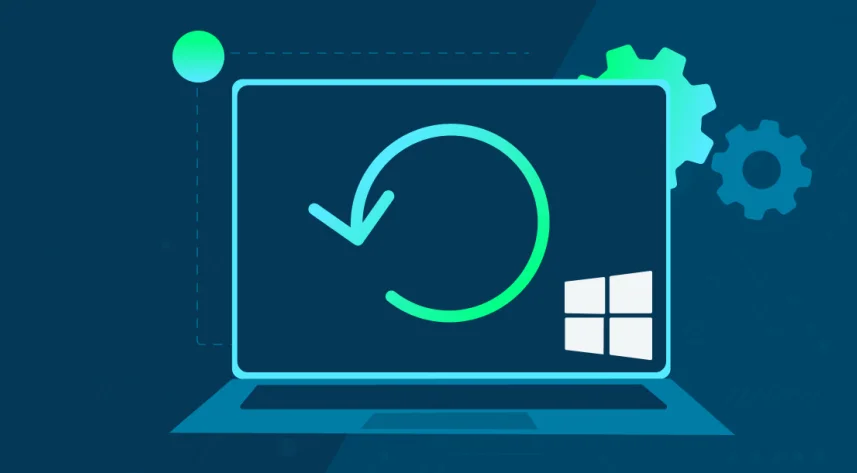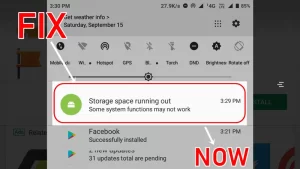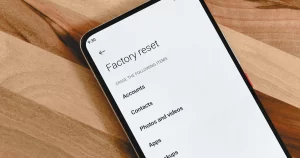Installing several new apps in a short period—whether on a smartphone or a desktop—can sometimes trigger unexpected problems: slow performance, random crashes, freezing, overheating, or background battery drain.
While each app may seem harmless on its own, the combined effect of multiple new processes, permissions, and services can quickly destabilize your system.
Whether you’re dealing with a cluttered phone after a bulk install or a PC that suddenly feels sluggish post-software spree, this guide walks you through how to restore stability in a clear, step-by-step fashion.
Why System Stability Breaks After Installing Many Apps
Before we dive into fixes, it’s important to understand what might be causing the issues:
| Cause | Description |
|---|---|
| Startup Overload | Many apps register themselves to launch on boot, increasing load time. |
| Background Services | Apps silently running tasks that consume CPU, RAM, or network bandwidth. |
| Conflicting Permissions | Apps with overlapping or conflicting hardware access (e.g., mic, camera). |
| Redundant Functionality | Installing similar apps that perform the same task can create conflict loops. |
| Low Storage Space | Caching and updates can fill storage quickly, degrading performance. |
| Malicious or Poorly Coded Apps | One unstable app can crash services shared across the OS. |
Step 1: Reboot Your System First
Sounds obvious, but a clean reboot is essential. After installing multiple apps, your system may be running outdated or uninitialized processes. Restarting:
- Clears temporary files
- Reinitializes system services
- Releases locked resources
Do this before taking further action to see if stability returns on its own.
Step 2: Identify Recent App Installations
Create a quick mental or actual list of all the apps you’ve recently added. You’ll use this list to prioritize your investigation.
How to View Recent Installs
| Platform | Steps |
|---|---|
| Android | Play Store > Tap Profile > Manage apps > Installed > Sort by “Recently Added” |
| iOS | App Store > Tap profile icon > Purchased > Sort by date |
| Windows | Settings > Apps > Sort by “Install date” |
| macOS | Applications folder > Sort by “Date Added” column |
Keep this list for the next step.
Step 3: Use Safe Mode to Test for Conflicts
Booting in Safe Mode allows you to see how your system behaves without third-party apps running.
| Platform | Safe Mode Activation |
|---|---|
| Android | Hold power > Long-press “Power Off” > Tap “Reboot to Safe Mode” |
| Windows | Hold Shift > Restart > Troubleshoot > Advanced Options > Startup Settings |
| macOS | Restart > Hold Shift until Apple logo appears |
| iOS | No native Safe Mode (unless jailbroken), use diagnostic tools instead |
If your system runs smoothly in Safe Mode, it’s likely one of the new apps is the culprit.
Step 4: Check System Resource Usage
Determine if one or more new apps are consuming excessive CPU, memory, or battery.
Tools to Use:
| Platform | Tool/Location | What to Look For |
|---|---|---|
| Android | Settings > Battery & Device Care | High background activity |
| iOS | Settings > Battery | Unusual drain or background use |
| Windows | Task Manager (Ctrl + Shift + Esc) | High CPU, RAM, or disk usage |
| macOS | Activity Monitor | Apps with spikes in resource usage |
Uninstall or disable any app that consistently ranks high without providing active utility.
Step 5: Uninstall Redundant or Unused Apps
Identify and remove apps that:
- Perform similar functions (e.g., multiple VPNs, cleaners)
- Were installed for testing but no longer needed
- Appear suspicious or have poor reviews
Tip: Avoid apps that promise to “optimize” or “speed up” your system unless they’re from trusted developers. These often do more harm than good.
Step 6: Manage App Permissions and Background Access
Many apps request permissions they don’t need. Limiting access can improve security and performance.
Permissions to Audit:
| Permission | Why It Matters |
|---|---|
| Location | Constant GPS polling drains battery |
| Camera/Mic | Increases risk and may conflict with similar apps |
| Background Data | Can overwhelm network resources |
Where to Change Permissions:
- Android/iOS: Settings > Privacy or App Permissions
- Windows/macOS: System Preferences/Settings > Privacy & Security
Step 7: Disable or Delay Startup Apps
Many apps auto-launch at startup, slowing your boot time and increasing resource use.
| Platform | How to Manage Startup Apps |
|---|---|
| Windows | Task Manager > Startup tab |
| macOS | System Settings > Users > Login Items |
| Android | Limited control without root; use third-party tools cautiously |
| iOS | No direct control, but removing background refresh helps |
Disable any startup apps that aren’t essential.
Step 8: Clear Cache and Temporary Files
Clearing temporary files can free up resources and eliminate leftover junk from app installations.
| Platform | How to Clear Cache |
|---|---|
| Android | Settings > Storage > Cached Data or individual app storage |
| iOS | Reinstall app or use Offload App feature |
| Windows | Use Disk Cleanup or Storage Sense |
| macOS | Use tools like CleanMyMac or clear /Library/Caches/ manually |
Step 9: Update System Software and Drivers
Sometimes, instability stems from outdated OS versions or drivers that aren’t fully compatible with new apps.
- On mobile devices, go to Settings > System Update.
- On Windows, use Windows Update and install optional driver updates.
- On macOS, check Software Update from the Apple menu.
Step 10: Perform a Final Stability Check
After applying the above fixes, use your system as normal for 24–48 hours. Pay attention to:
- Boot speed
- App responsiveness
- Background battery drain
- Any spontaneous reboots or freezing
If the issues persist, consider performing a system scan for malware, particularly if the apps were installed from third-party sources.
Troubleshooting Summary Table
| Issue | Fix |
|---|---|
| Slow performance | Remove unused apps, clear cache |
| Battery drain | Audit background activity and permissions |
| Freezing or crashes | Boot in Safe Mode, uninstall conflict apps |
| Long startup time | Disable or delay startup apps |
| App redundancy | Uninstall duplicates or similar tools |
Final Thoughts
Installing multiple apps at once can overwhelm even modern systems. It’s not always a single app that causes issues, but the combined resource demands, background activity, and potential conflicts that degrade performance and stability. By systematically auditing installations, managing background access, and watching key performance metrics, you can restore your device to a smooth, reliable state.
When in doubt, less is more. Only install what you need, keep your system lean, and make app cleanup a regular habit—not just something you do when things break.



